I've carefully read Wikipedia article and can't get one important thing - is there galvanic separation in such supply?
The diagram in that article goes like this:

What I see here is that the transformer is only on one path and there's the "output->chopper controller" path that bypasses the transformer. Usually the transformer is the unit that performs galvanic separation.
Does this mean a switched-mode power supply doesn't feature galvanic separation between the input and the output? Is it possible for unlimited current to flow through the power supply?